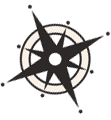Water quality is critical to the health of Wisconsin’s coastal ecosystems, communities, and economies. Clean water supports drinking water supplies, recreational activities like swimming and fishing, and thriving aquatic habitats. However, issues like industrial pollution, nutrient runoff, harmful algal blooms, and emerging contaminants continue to impact water quality throughout the state. Improving and protecting water quality is a shared responsibility that requires monitoring, assessment, and management efforts across local, state, and federal levels. These resources highlight water quality issues, monitoring strategies, mapping tools, and restoration efforts to help stakeholders better understand and safeguard Wisconsin’s valuable water resources.
Getting Started

Whether you’re swimming, drinking, or eating something that came from it, water can have an impact on your health in a variety of ways. This page has a variety of resources on water to help you find information you are looking for.

This 2021 update to Wisconsin’s Water Quality Monitoring Strategy presents DNR’s vision to fulfill Wisconsin’s Clean Water Act (CWA) monitoring responsibilities. This strategy supports the DNR’s statewide commitment to protecting and improving water quality through monitoring that is structurally integrated with waterbody assessments and management needs across multiple water programs.
Assessing Water Quality

Water Quality Monitoring Strategy (2021-2025)
Wisconsin Dept of Natural Resources (WI DNR)
This 2021 update to Wisconsin’s Water Quality Monitoring Strategy presents DNR’s vision to fulfill Wisconsin’s Clean Water Act (CWA) monitoring responsibilities. This strategy supports the DNR’s statewide commitment to protecting and improving water quality through monitoring that is structurally integrated with waterbody assessments and management needs across multiple water programs.

Impaired waters in Wisconsin are largely addressed through an analysis known as a Total Maximum Daily Load (TMDL). A TMDL is the amount of a pollutant a waterbody can receive and still meet water quality standards. While some waters may be restored through alternative projects such as watershed restoration plans, many issues are addressed through TMDLs
Mapping Water Quality

The Water Quality Portal (WQP) is the premiere source of discrete water-quality data in the United States and beyond. This cooperative service integrates publicly available water-quality data from the United States Geological Survey (USGS), the Environmental Protection Agency (EPA), and over 400 state, federal, tribal, and local agencies

The Watershed Assessment, Tracking & Environmental Results System (WATERS) unites water quality information previously available only from several independent and unconnected databases, enabling environmental professionals and interested citizens to access comprehensive information about the quality of the nation’s surface water.

This site provides easy access to long-term, environmental monitoring data collected throughout the Great Lakes. There are a range of environmental parameters to choose from such as nutrients, contaminants and physical properties of water from various sources.
Restoration and Management

The Water Condition Viewer (WCV) is an interactive mapping tool that focuses on water condition, monitoring, assessment and management data. Data includes Clean Water Act, Monitoring Projects, Monitoring Stations and Data, Targeted Watershed Assessments, Wastewater Evaluation, Watershed Planning, County Land and Water Plans, Nine Key Element Plans and more.

Watershed Restoration and Protection Viewer
Wisconsin Dept of Natural Resources (WI DNR)
The DNR’s Watershed Restoration & Protection Viewer is an interactive web mapping tool for exploring water quality improvement and protection projects across Wisconsin. When waters are listed as impaired as defined by the EPA, the DNR works to improve the waters by implementing various types of frameworks such as Total Maximum Daily Loads (TMDLs) and Nine Key Element Plans. If the waters are already healthy, the DNR works to maintain their healthy status for current and future generations to enjoy.

Water quality modeling can be used to better understand hydrological systems and evaluate the impacts of management decisions on Wisconsin’s surface waters. The models on this page were developed for particular management purposes and their use requires an understanding of the model’s assumptions as well as inputs and outputs that are used. Review the associated documentation for each model to ensure proper application.
Explore Further

Wisconsin Sea Grant is dedicated to enhancing the quality of coastal waters of lakes Michigan and Superior. We achieve this by developing local capacity to improve and protect water resources and educating Great Lakes basin residents, visitors and decision-makers about the causes and consequences of water-quality problems. On this page you will find science-based information and other resources from Wisconsin Sea Grant about the sources, transport and fate of contaminants in the Great Lakes, the cause-and-effect relationships between watershed activities and water quality, and the impacts of coastal development on nearshore habitats
